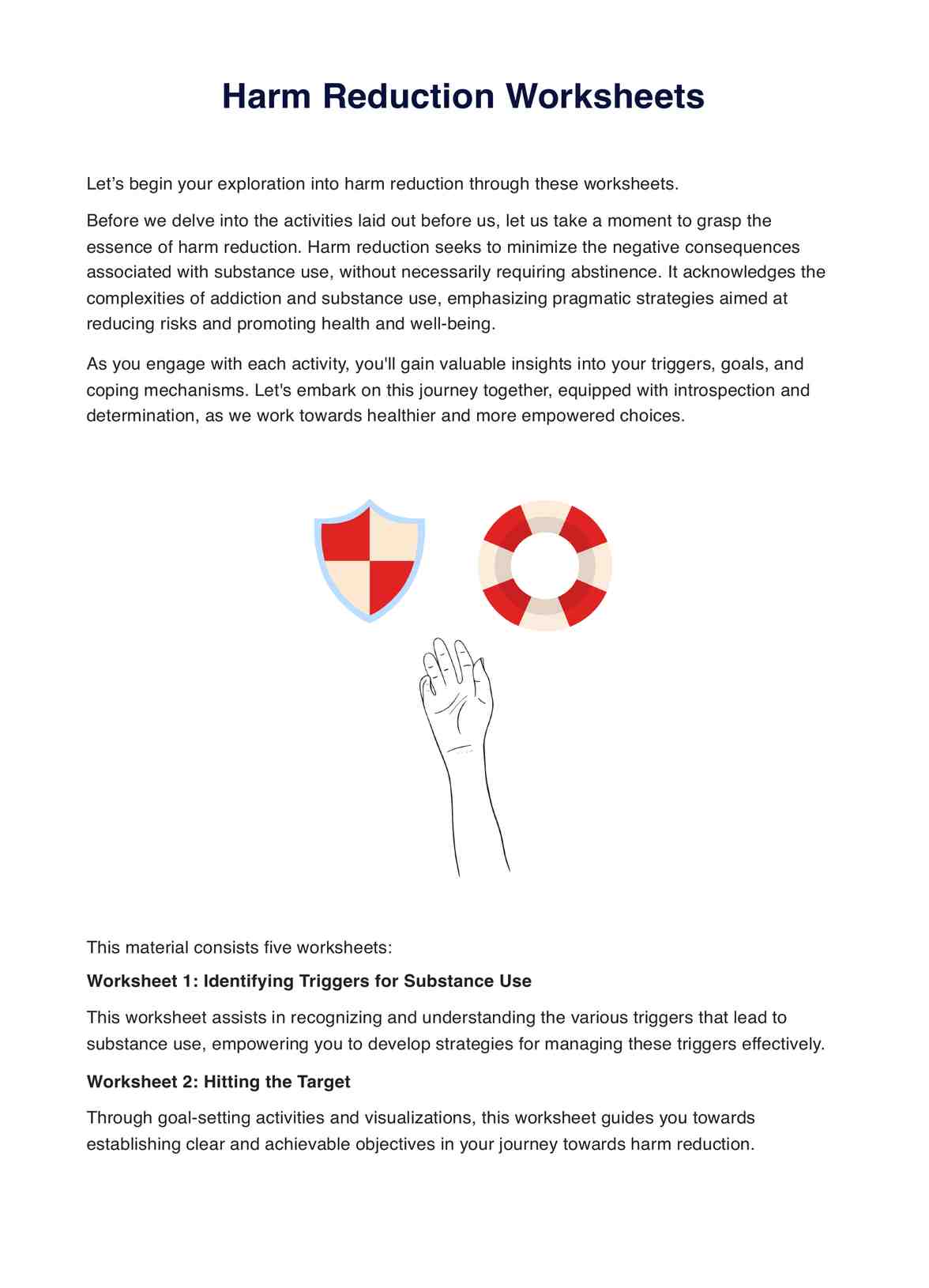No, harm reduction does not promote drug use but instead aims to minimize the negative consequences associated with substance use.

Harm Reduction Worksheets PDF
Make your harm reduction psychotherapy meaningful and effective with the help of the Harm Reduction Worksheets PDF.
Use Template
Harm Reduction Worksheets PDF Template
Commonly asked questions
Harm reduction is crucial because it focuses on reducing the harm caused by substance use and risky behaviors.
It depends on how much you want to dive into each worksheet and how quickly you absorb the information. Some might finish them in just a few minutes, while others might take an hour or more to digest everything and reflect on it properly.
EHR and practice management software
Get started for free
*No credit card required
Free
$0/usd
Unlimited clients
Telehealth
1GB of storage
Client portal text
Automated billing and online payments











